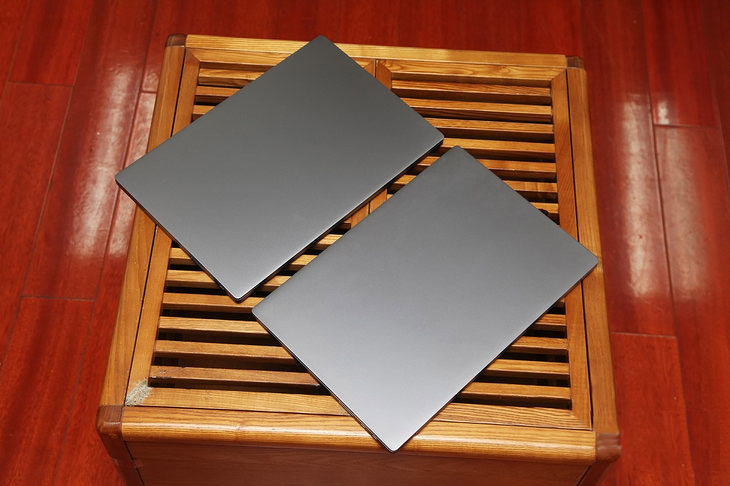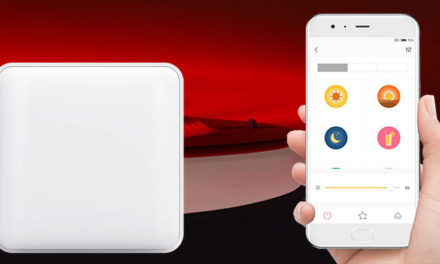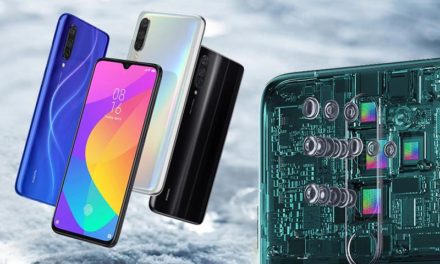
Xiaomi Notebook Pro against the Xiaomi Notebook Pro GTX version

The Xiaomi Notebook Pro was the best Chinese notebook, the only shortcoming improved by the new release.

Xiaomi unveiled a new version of the Xiaomi Notebook Pro on August 16th. Most of the capabilities remained unchanged, but significant improvements were made at two points. One of these is the processor, although it is still an Intel Core i7, but we can no longer welcome the seventh but the eighth generation processor in the machine. An even bigger change is that the NVIDIA MX150 video accelerator has been replaced by the NVIDIA GTX 1050 MAX-Q, giving the company improved on the only capability of the machine that made it possible to get the front of the house.
In this article, we’ll focus more on the newer machine in terms of capabilities, as its performance has changed.
contents show
Xiaomi Notebook Pro vs Xiaomi Notebook Pro GTX Version: Appearance
At first glance, the machine is exactly the same. The new machine also retains the stiffening frame made of magnesium alloy and the housing made of aluminum alloy. What is not apparent is that the thickness of the aluminum alloy cladding has increased by 25 per cent, so that the resilience of the already rigid housing has further increased, specifically doubled. The thickness of the machine did not change, however, we can measure only 16,9 millimeters.
The upper side of the gray machine housing, covering the display, is simple and generous, we can't find anything on it, even the company logo is missing. This only appears on the bottom of the machine and on the bottom frame of the display. At the rear edges of the machine are large grids for dissipating heat, through which the processor leaves the memories and heat generated by the VGA.
At the center of the D-face is an attached appropriate certificate label. The lower middle section carries the printed logo of Xiaomi. The row in the middle has wide heat dissipation windows, which is beneficial for internal hardware.
At the lower edges you can see the openings in the speaker. The GTX version of the Xiaomi Notebook Pro is equipped with Harman Infinity speakers and has a larger sound chamber design compared to the previous generation, resulting in a fuller appearance of lower frequency sounds. The high performance and Dolby surround effect provides an even more cinematic experience during movies, but the new system is also beneficial for listening to music. - It should be noted that in our own experience, the performance of the Notebook Pro is also above average in terms of sounds, so if they could improve on this, it would really be a sensational result.
The GTX version of the Xiaomi Notebook Pro weighs 1,99, while the older version weighs 1,98 kilograms, meaning the two machines weigh essentially the same. This weight is one of the greatest virtues of the machine, as it can be carried comfortably without fatigue, and it also fits easily in the thinnest notebook bag or briefcase due to its extremely slim housing.
The Xiaomi Notebook Pro GTX, like its predecessor, uses a 15,6-inch display surrounded by a very narrow 6,52mm frame. As a result, with a full HD display, the ratio of the total sheet to the display reaches 81,5 percent. The front features a 15,6-inch screen with a 6,52mm ultra-narrow bezel. Due to the full-size technology, the screen ratio can be up to 81,5%. Above the screen we find third generation Corning Gorilla Glass, which protects well from scratches and other physical impacts. The machine also got a webcam, which is located above the middle of the screen and has a resolution of 720p.
The colors of the Xiaomi Notebook Pro and GTX displays are already perfect and vivid to the eye. The results measured with Spyder 5 show that the NTSC color space covers 71 to 95 percent of the sRGB color space. These are good values, but it is part of an honest assessment that they are minimal but fall short of the 72 percent specified by the manufacturer.
Xiaomi Notebook Pro vs Xiaomi Notebook Pro GTX version: keyboard and touchpad
The new notebook uses the same keyboard as its predecessor, it would have been completely unnecessary to change. The buttons are large and spaced far enough apart to prevent accidental touches. The disadvantage of this design is that although it fits most 15-inch notebooks, there is no space for a numeric keypad. Something for something, we might say.
The path of the buttons when pressed is 1,5 millimeters. With hyperboloid keyboard caps, use is comfortable, and knock feedback detection is unmistakably accurate. On the right side of the keyboard are the function keys that make the machine easier to use.
The keyboard is backlit, but it is not lit all the time. When you start typing it turns on and then after you don't touch the keys it automatically shuts off, thus reducing power consumption. The power button on the machine is also located between the keys on the keyboard, in the upper right corner. This key also got a small white LED that lights up when turned on and flashes in sleep mode.
The Xiaomi Notebook Pro and GTX version have got a large touchpad that also supports gesture control. It is comfortable to use, due to the large surface, our fingers never get lost. The click sensitivity of the right and left buttons is also perfect, they can be used quickly and safely. In the upper right corner of the touchpad is the fingerprint reader that can unlock the machine in two seconds. Important and good news is that the machine does not upload fingerprints, so it does not store them in the cloud, it always stays in the machine, thus protecting us from possible misuse. - It is my own experience that the operation of the fingerprint reader is impeccable, it recognizes the entered fingerprints from hundreds to hundreds of times without delay. Under Windows 10, you can also use a password, PIN, or fingerprint unlock.
Xiaomi Notebook Pro vs Xiaomi Notebook Pro GTX Version: Connectors
Compared to the previous generation, there is almost no change in the knowledge of connectors. The only updated point is that the GTX version of the Xiaomi Notebook Pro on the right is already equipped with a UHS-II 312MB / second card reader, making it faster than its predecessor.
As for the other ports, we get two USB Type-C interfaces, which support external charging. The USB Type-C on the right is the full-featured interface. With the Xiaomi USB Type-C multifunction adapter, the output can also be converted to HDMI, VGA, Mini DisplayPort and Gigabit Ethernet connectors. On the left side of the machine you will find an HDMI connector, two standard USB 3.0 ports and a 3,5mm headphone / microphone two in one connector.
Xiaomi Notebook Pro vs. Xiaomi Notebook Pro GTX Version: Performance Testing
The GTX version of the Xiaomi Notebook Pro is equipped with an eighth generation Core i7-8550U processor, the pixels are drawn by the NVIDIA GeForce GTX 1050 Max-Q GPU using 4GB of GDDR5 memory. The machine comes with no less than 16GB of 2400MHz dual-channel memory and 256GB of PCIe solid state drive for excellent performance.
Processor performance test
The eighth-generation Core i7-8550U processor is made in 14-nanometer bandwidth, quad-core and can work on eight threads in parallel. The base clock is 1,8 GHz, but it can accelerate up to 4 GHz if needed, with a maximum power consumption of 15 watts.
The CineBench R15 was used to test processor performance. The benchmark multi-core test was 795 CB, while the single-core test reached 165 CB. So you can see that the overall performance is very good. It outperformed the i7-7700HQ in terms of results, and in the multi-core test, the i7-7820HK ticked it off.
Graphic performance test
We used 3DMark Fire Strike mode to test the graphics card and the final result was 5797 points. Compared to the previous generation Xiaomi Notebook Pro 3194, this is a significant leap in performance, which is clearly due to the fact that instead of the weaker MX150, the much more powerful NVIDIA GeForce GTX 1050 Max-Q works in the machine.
GTX version
MX150 version
Game test
The performance of the machine during games was tested using PLAYERUNKNOWN. At a resolution of 1920 X 1080 pixels, we set the high quality mode (the second highest). The average frame rate of the GTomi version of the Xiaomi Notebook Pro reached 60,437 FPS, and the highest number of frames displayed was 75. This result supports our expectation that the machine can easily run almost any difficult game. Compared to the previous generation Xiaomi Notebook Pro compared to the MX150 graphics card, the new NVIDIA GeForce GTX 1050 Max-Q is truly a leap in quality. Although its predecessor was perfect for office work on the Notebook Pro, we can still offer an updated version of the newer NVIDIA GeForce GTX 1050 Max-Q for gaming.
Hard disk performance test
As mentioned, the Xiaomi Notebook Pro is equipped with a 256GB PCIe solid state drive. Tests show that the drive has a continuous read speed of 2260,74 MB / second and a continuous write speed of 696,54 MB / second. The read and write performance is excellent and meets all the needs of the users.
Thermal test
The temperature of the machine was measured after one hour of continuous use. From the photos, you can see that under full load, the hottest parts of the notebook are concentrated around the grille. The hottest spots appear to be at the right and left slots, but the rest of the machine, including the keyboard, stays cool. According to the measurements, the maximum measured temperature is 57,6 ° C.
Battery life test
We adjusted the brightness of the notebook to 80%, the volume to 20%, turned off Bluetooth, GPS positioning and other background software, and played a 1080P video continuously for an hour. The battery charge dropped from 99% to 89 percent during this time, with total power consumption of 10%. The GTX version of the Xiaomi Notebook Pro is capable of continuously playing HD video for 10 hours. With daily use, there is no problem with a battery life of 10 hours or even longer.
Xiaomi Notebook Pro vs Xiaomi Notebook Pro GTX version: battery and cooling system
The screws on the back cover have been removed. There is also a hidden screw, located under one of the front rubber struts. After removing the screws, the back cover can be easily removed. After removing the back cover, we can see that there is an extra M.2 SATA SSD slot left, which can be used to further expand the storage capacity, or even use RAID mode if we deem it appropriate.
The battery capacity can be read from the printed label on the battery, which states that a 60 Wh lithium battery has been inserted. The battery is thin and light, it does not thicken the machine unnecessarily.
We can see a change in the field of cooling. The Xiaomi Notebook Pro used a heat pipe that transported the heat generated from the middle platen in contact with the processor to the two side heat sinks. In the new version, the increased performance of the VGA controller also brought with it the problem of multiple source heat. As a result, it became necessary to install a second tube that dissipates more heat from the VGA side. According to factory data, the performance of the new cooling improved by 38,5 percent compared to its predecessor.
AC adapter and quick charge function
The Xiaomi Notebook Pro GTX version uses the same dual USB Type-C connector charging as the previous generation. Both the adapter and the notebook need to use the USB Type-C interface data cable and the 90W power supply connector, which supports 1C fast charging, so we can charge the machine from zero to 35 percent in 50 minutes.
Conclusion
As the article shows, the new Xiaomi Notebook Pro GTX is clearly an upgrade from the previous version. Replacing the processor with the newer version is natural, but replacing VGA from the NVIDIA MX150 to the more powerful NVIDIA GeForce GTX 1050 Max-Q was not at all evident. On machines like the Xiaomi Notebook Pro, engineers are faced with the serious task of cooling the machine, and in many cases this is exactly the whole project. The slim case makes it difficult for engineers, so the more heat-producing NVIDIA GeForce GTX 1050 Max-Q could be built into the body of the Notebook Pro for serious performance.
Measurements prove that the Xiaomi Notebook Pro, which is the most recommended for the business environment so far, now holds its own even when running serious, performance-intensive games, so we can run into Xiaomi's beautiful machine in new areas!
What is perhaps natural is that the starting price of the new machine was higher than that of the older version that year. Currently, the Xiaomi Notebook Pro for business use with an Intel Core i5 processor can be purchased for between $ 800-900 and the i7 version for between $ 1000-1100. The price of the new GTX variant is currently in excess of $ 1500, and we cannot expect a significant price drop in the near future. However, it’s worth looking around for coupon promotions because the older i7 version was available for sale between $ 800- $ 900 last fall sale, and we expect to get a small discount on the new NVIDIA GeForce GTX 1050 Max-Q is.
You can find the Xiaomi Notebook Pro Core i5 version here: Xiaomi Mi Notebook Pro Fingerprint Recognition - DEEP GRAY CORE I5 8GB + 256GB
If you are interested in the Xiaomi notebook Pro Core i7 version, click here: Xiaomi Mi Notebook Pro Fingerprint Recognition - DEEP GRAY CORE I7 16GB + 256GB
And you can buy the new Xiaomi Notebook Pro GTX version with NVIDIA GeForce GTX 1050 Max-Q here: Xiaomi Mi Notebook Pro GTX1050 Fingerprint Recognition - DEEP GRAY CORE I7 16GB + 256GB
Remember, use the EU Priority Line delivery when shopping so that you do not incur additional costs during delivery!
Our article is in Chinese PCPOP.com made using page writing






































